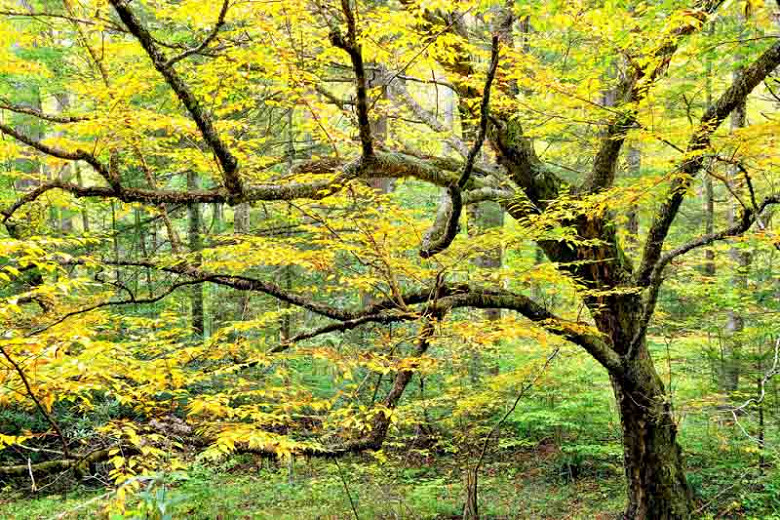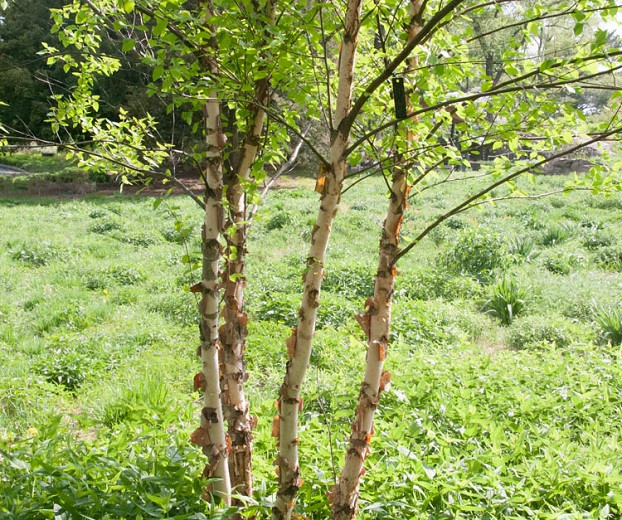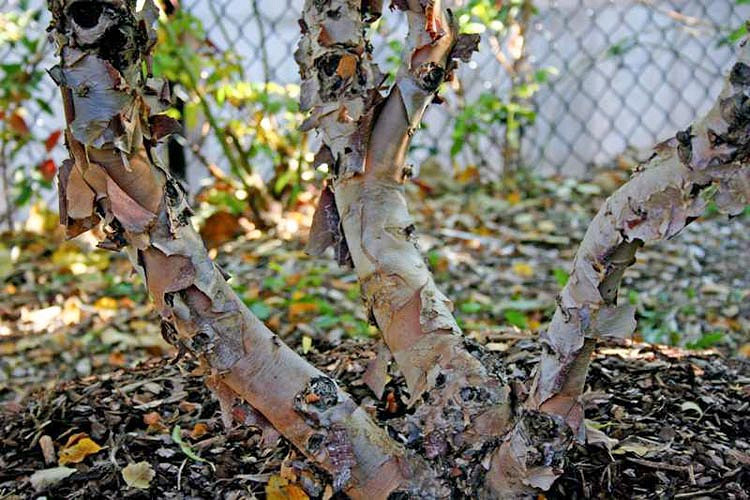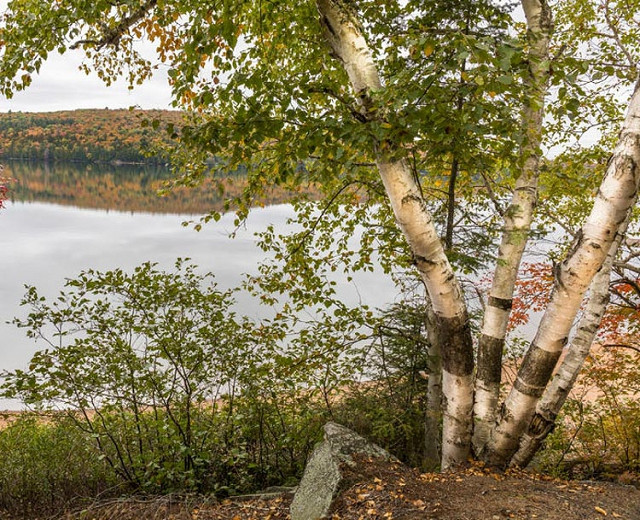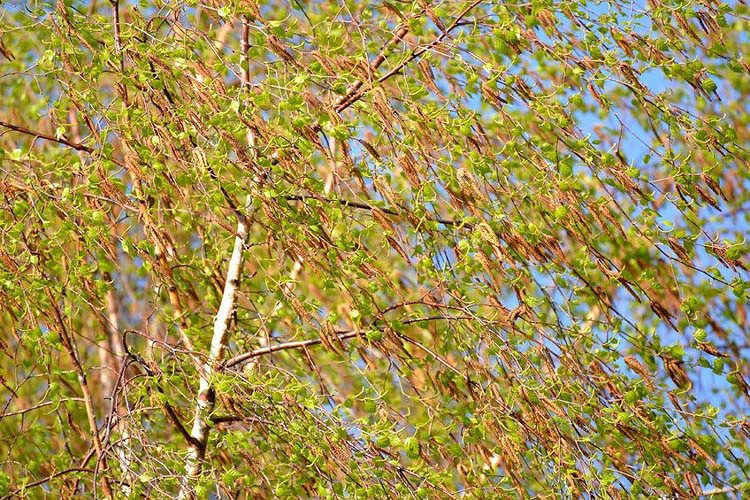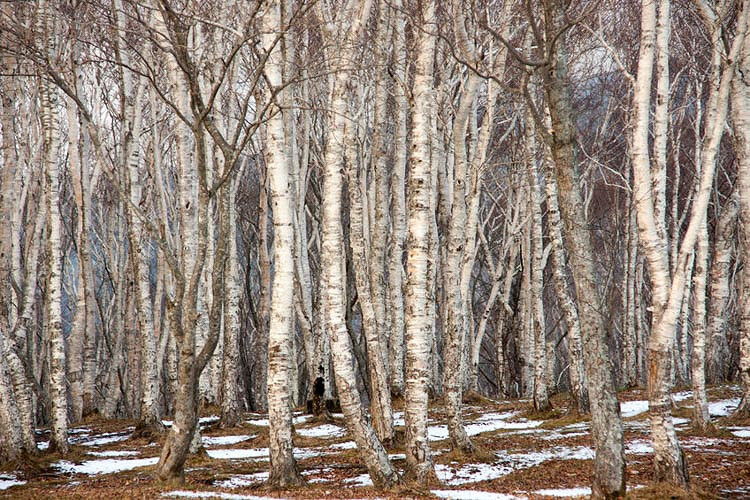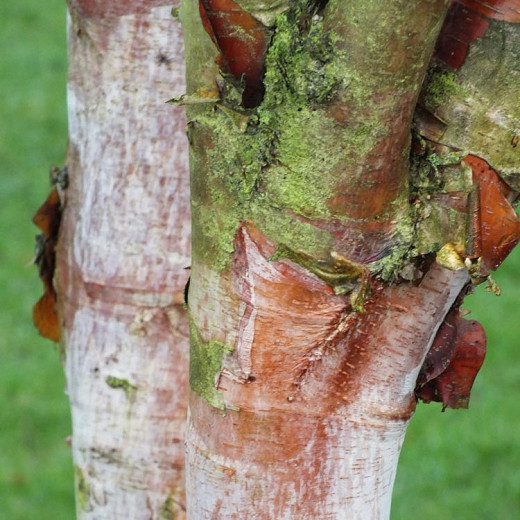Betula alleghaniensis (Yellow Birch)
One of the most valuable birches, Betula alleghaniensis (Yellow Birch) is a slender deciduous tree of conical habit in youth, becoming rounded with age. Its branches are covered with ovate, dark green leaves, 3-5 in. long (7-12 cm). The foliage turns brilliant golden yellow in fall. Tiny inconspicuous flowers appear in spring before the leaves unfurl. They are held in hanging catkins (male flowers) or in upright catkins (female flowers). They provide pollen for bees and other insect pollinators. Yellow Birch gives off a heady aroma of wintergreen when leaves, shoots, or bark are crushed. The bark is a polished brown or bronze, with thin, papery, shaggy shreds on young trees, becoming gray-brown and breaking into large, ragged-edged plates with age. Yellow Birch is a wonderful plant for wildlife. It attracts caterpillars and provides food for migrating birds in spring and fall. Attractive in all seasons, this superb eastern North American native is an excellent specimen tree and is also useful for lawns and naturalized areas. Trees planted in a grove fashion form a beautiful, natural effect. Slow-growing and long-lived (approximately 150 years), Yellow Birch performs best in cooler climates.
- Grows up to 60-80 ft. tall and wide (18-24 m).
- Performs best in full sun to part shade in moderately fertile, moist, well-drained soils. Tolerates a wide range of soil conditions including wet soils.
- Perfect as a specimen plant, in cottage gardens, or wildlife gardens.
- Low maintenance, this plant needs little pruning. If pruning is necessary, prune during the dormant season (when the sap has stopped flowing) from late summer to before mid-winter.
- Yellow Birch shows some resistance to bronze birch borer,& a severe problem for many of the white-barked species. Keep an eye out for birch leaf-mining sawfly, aphids, honey fungus, mildew, and birch rust.
- Propagate by root softwood cuttings in summer, or propagate by grafting in winter.
- Native to northeastern North America.
Requirements
| Hardiness | 3 – 7 |
|---|---|
| Heat Zones | 1 – 7 |
| Plant Type | Trees |
| Plant Family | Betula – Birches |
| Exposure | Full Sun, Partial Sun |
| Season of Interest | Spring (Early,Mid,Late)Summer (Early,Mid,Late)FallWinter |
| Height | 60' – 80' (18m – 24m) |
| Spread | 60' – 80' (18m – 24m) |
| Water Needs | Average |
| Maintenance | Low |
| Soil Type | Chalk, Clay, Loam, Sand |
| Soil pH | Acid, Alkaline, Neutral |
| Soil Drainage | Moist but Well-Drained |
| Characteristics | Showy |
| Native Plants | United States, Midwest, Illinois, Indiana, Michigan, Minnesota, Ohio, Wisconsin, Northeast, Connecticut, Delaware, Maine, Massachusetts, Maryland, New Hampshire, New Jersey, New York, Pennsylvania, Rhode Island, Vermont, Southeast, Georgia, Kentucky, North Carolina, South Carolina, Tennessee, Virginia, West Virginia |
| Tolerance | Wet Soil |
| Attracts | Bees, Birds |
| Garden Styles | Informal and Cottage, Prairie and Meadow |
